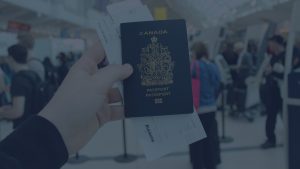Those in need of a new home in Canada may qualify for the Canadian refugee immigration program through several different avenues. These include family members of refugees, Convention refugees, and private sponsorship. Listed below are some of the most common types of refugee immigration and their specific eligibility requirements. Read on to find out more. Listed below are some examples of different refugee immigration pathways to Canada. These paths can provide new Canadians with the financial and social support they need to begin their new lives. For better assistance, it’s better to get in touch with toronto immigration lawyers.
Family members of a refugee
In Canada, you can sponsor a relative, such as spouses, children, or parents, for permanent residency if you are a legal resident. Alternatively, you can sponsor a refugee as a refugee who is in need of permanent residence. Canadian law recognizes same-sex relationships, as long as you can prove that the relationship has been ongoing for more than a year.
In Canada, there are several government programs that allow family members of a refugee to immigrate with him or her. One of these programs allows a refugee to apply for permanent residence in Canada as soon as the principal applicant receives their permanent residence. Once the principal has been granted permanent residence, any remaining family members of the refugee must apply within a year. This period of time is also available to undocumented relatives of the principal applicant.
Convention refugees
The Convention Refugee status refers to people who do not have their nationality but are outside their country and fear returning to a dangerous place. They are unable to return to their homes because of the risk of torture, death, or cruel punishment. Canada’s refugee immigration program responds to the needs of these individuals in the resettlement process by establishing the Country of Asylum Class. Convention refugees cannot make a refugee claim to the United States due to the Safe Country Agreement.
A Convention Refugee is a person who is in dire need of protection but is not a danger to Canada. They can apply to become a Protected Temporary Resident of Canada after establishing their eligibility. They may then apply for permanent residency in Canada. In some cases, Convention Refugees may also apply for permanent residency in Canada. But the process is long and complex. It’s worth it to understand what you’re getting into.
Asylum seekers
Asylum seekers in Canada’s refuge migration program are protected persons who are unable to return to their country due to persecution, war, or torture. In order to be eligible for asylum, refugees must face imminent danger or detention, persecution for their faith, or cruel treatment at home. If you meet these criteria, you can apply for refugee status and be eligible to become a permanent resident of Canada.
The majority of asylum claimants in Canada transited through the United States before claiming protection in Canada. Approximately 60 percent spent at least five days in the U.S. before moving to Canada. The remaining respondents stayed in the United States for an average of six years. These findings are important because they provide important insight into the processes of determining the eligibility of a refugee. In addition, they show that welcoming newcomers reduces crime rates in the host country.
Private sponsorship of refugees
The role of private sponsorship in the Canadian refugee immigration program is important. It provides the private sector with a platform to act in the face of refugee crises and to welcome more refugees than the government can accommodate. Private sponsorship encourages better understanding between the public and private sectors, and helps those who need protection most. The benefits of private sponsorship are many, and it can help the government to meet its refugee immigration targets.
Canada’s private sponsorship program is a global model for helping refugees settle in Canada. It has been a key component of Canada’s refugee immigration program since the 1980s. Although fewer refugees are applying for private sponsorship today, it still helps numerous refugees to resettle in Canada. Read on to learn more about this program and how it works. There are two streams of private sponsorship. The first stream is the private sponsorship program, and the second stream is the blended program.

